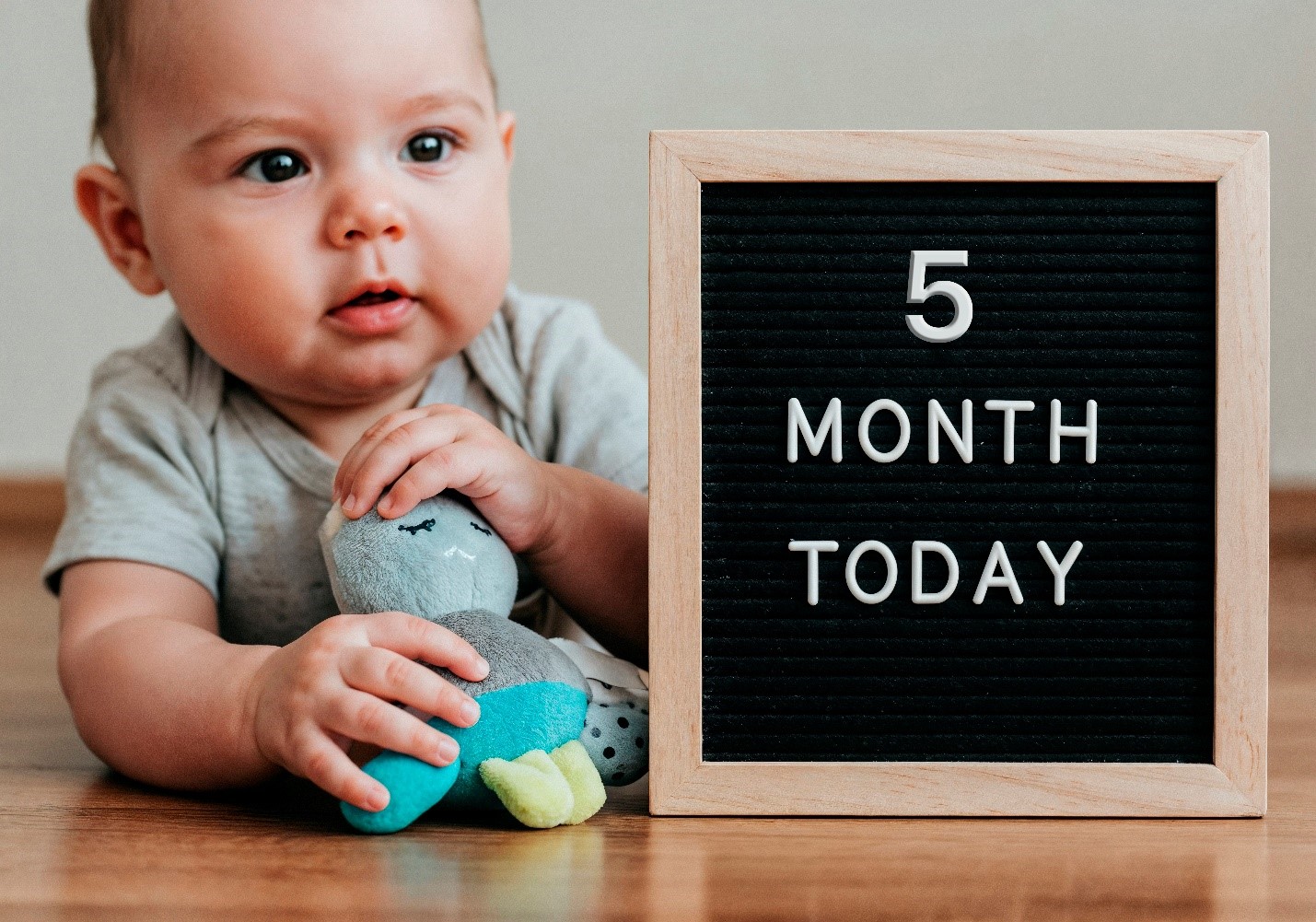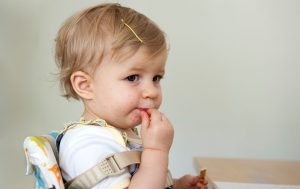Why Milestone Tracking Helps—Without Stress
Every baby’s timeline has wiggle room, yet milestone charts spotlight ranges that flag early motor or language delays if missed together. The Centers for Disease Control and Prevention groups skills into four domains—social, language, cognitive, and motor—updated in 2024 to reflect modern data . Think of milestones as guardrails: they guide tummy‑time games and reassure you when growth spurts seem to pause.
Month‑by‑Month Milestone Timeline (0‑6 Months)
| Age | Social & Emotional | Language | Cognitive | Motor |
| Birth–1 mo | Quiets to parent voice | Startles at loud sounds | Focuses 8–12 in away | Moves arms equally |
| 2 mo | Social smile appears | Coos, “oo” sounds | Follows face side‑to‑side | Lifts head 45° on tummy |
| 3 mo | Looks at hands | Babbles vowel chains | Tracks dangling toy | Rolls front→back (some) |
| 4 mo | Copies smile | Laughs aloud | Reaches for toy | Pushes up on elbows |
| 5 mo | Enjoys mirror play | Blows raspberries | Mouths objects | Grasps rattle whole‑hand |
| 6 mo | Knows familiar faces | Responds to name | Passes toy hand‑to‑hand | Sits with support |
Use the free CDC “Learn the Signs” app to tick boxes and set doctor‑visit reminders.
Red Flags to Discuss Promptly
- No social smile by 3 months
- Head still lags when pulled to sit at 4 months
- Stiff or floppy limbs any time
- Does not roll either way by 6 months
- Lack of eye contact or response to sounds
Early intervention yields the best outcomes—Texas Early Childhood Intervention (ECI) services accept referrals without a diagnosis.
Activities That Nurture Each Skill
1. Social Smile Boost
Hold baby 8 in away, exaggerate “O” mouth, then smile slowly. Most mimic within a week.
2. Tummy‑Time Games
Place a high‑contrast card in a U‑shaped pillow ring; move card in small arcs to encourage mini push‑ups.
3. Rolling Ready
Lay baby on a playmat, extend one arm forward, gently bend the opposite knee over midline—rock hips to show the motion pattern.
4. Grasp Practice
Offer a textured silicone teether (2 in diameter). The different ridges prompt full‑hand grasp, prepping pincer grip later.
5. Supported Sitting
Sit cross‑legged, rest baby’s back against your torso, place bright cups within reach; this builds core balance safely.
Sample Daily Development Schedule (3‑Month‑Old)
| Time | Activity | Skill Targeted |
| 7 a.m. | Smile chat during diaper change | Social |
| 9 a.m. | Tummy‑time song (5 min) | Motor |
| 11 a.m. | “Rattle reach” play | Grasp/cognitive |
| 2 p.m. | Walk outside; name sounds (birds, cars) | Language |
| 5 p.m. | Mirror tummy‑time (3 min) | Social visual |
| 7 p.m. | Bath splash & kick | Core strength |
Tiny reps sprinkled through the day trump one big session.
Nutrition & Sleep Foundations
Growth hormones surge in deep sleep; 2‑ to 3‑month‑olds still need 14–17 hours daily (naps + night). Iron in breast milk dips around four months; pediatricians may check levels at the six‑month visit and suggest iron‑rich foods or drops.
Myth‑Busting Corner
Myth 1: “Walkers help my baby learn to walk sooner.”
Reality: Walkers delay independent walking and risk falls—floor play is safer.
Myth 2: “Big babies roll later because of weight.”
Reality: Rolling relies more on practice than size; encourage side play to build shoulder control.
Myth 3: “Skipping tummy time is fine if baby hates it.”
Reality: Without prone play, delays in rolling and sitting double .
For more facts, review the American Academy of Pediatrics gross‑motor statement (opens in new tab).
DIY Milestone Photo Ideas
| Month | Prop | Pose Tip |
| 1 | Swaddle blanket | Capture reflex smile close‑up |
| 2 | Black‑and‑white card | Show head‑lift angle |
| 3 | Plush rattle | Frame first grasp |
| 4 | Mini soccer ball | Record push‑up posture |
| 5 | Mirror | Snap surprise expression |
| 6 | Stacking rings | Highlight supported sit |
Print a collage to bring to well checks—visual timelines aid discussion.
Parent Self‑Check: The “Four Rs”
- Rest – nap when baby naps at least once a day.
- Routine – predictable feeds/naps calm both nervous systems.
- Reach out – text a friend during evening fuss.
- Review – jot one new skill weekly; celebrate progress rather than compare.
External Resources for Added Support
- CDC Milestone Tracker App – free download for iOS/Android.
- Zero to Three Activity Toolkits – age‑based play ideas vetted by child‑development experts.
Both open in new tabs so you keep this article handy.
Looking Ahead: 7–12 Months Sneak Peek
Expect crawling around 9 months, first word near the first birthday, and emerging pincer grip for self‑feeding. Setting safe floor zones now makes the next milestones smoother.
Celebrate Every Step—Ask When Unsure
Parents are the best detectors of “something’s off.” Keep questions coming at regular exams; small tweaks (extra tummy‑time minutes, iron checks) can propel skills forward.
Ready to Review Progress?
Ask at your next well check—our pediatric team will plot growth, demo new activities, and answer milestone questions.







